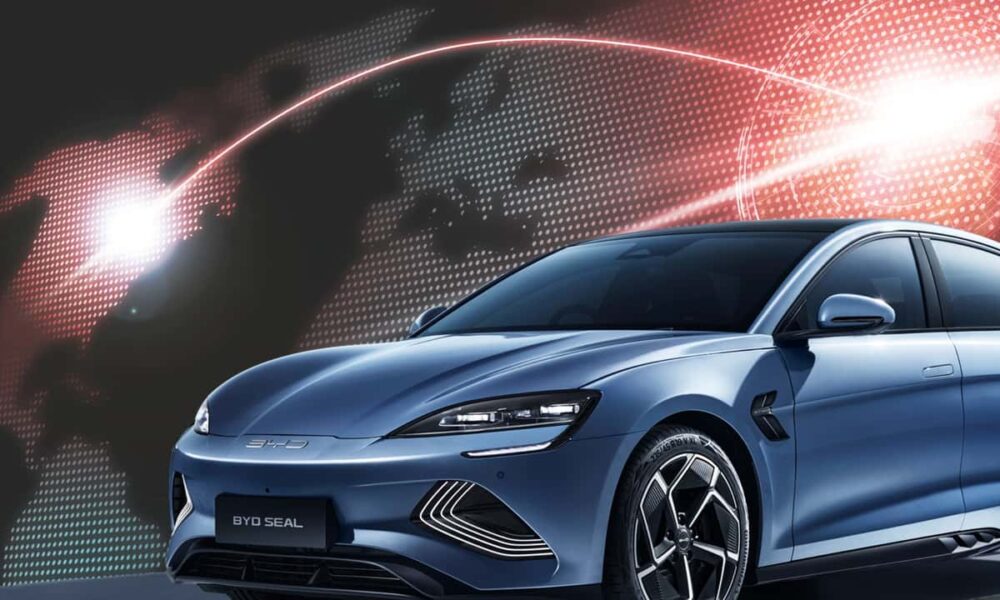
The global auto industry is witnessing a seismic shift—one that has left Western economies scrambling to respond. China, once synonymous with cheap manufacturing, has become the world’s largest car exporter, selling 5.26 million vehicles abroad in 2023—a staggering 50% more than Japan, the second-largest exporter. The meteoric rise of companies like BYD, which overtook Tesla in Q4 2023 with 526,409 EV sales (compared to Tesla’s 484,507), signals a new era of Chinese dominance. But how did this happen so fast? And is it a fair fight?
China’s Long Game: 15 Years of Strategic Dominance
Fifteen years ago, China laid the groundwork for this moment. While Western automakers focused on incremental innovation, Beijing poured billions into subsidies, infrastructure, and BYD. The results?
BYD’s new EV factory in Zhengzhou spans 50 square miles—larger than San Francisco—enabling production at a scale no Western automaker can match.
48,000 km of high-speed rail built since 2008—more than the rest of the world combined.
World’s first flying taxi certification (July 2024) by China’s EHang, set to launch commercial autonomous air taxis this year.
The Unfair Advantage? State-Backed Capitalism
Former U.S. President Joe Biden wasn’t wrong when he called China’s rise a product of “unfair business practices.” Unlike in the West, where companies compete independently, China’s private sector operates hand-in-glove with the state.
BYD received $4.3 billion in government subsidies from 2018–2022 (Bloomberg).
Chinese EV makers benefit from artificially cheap lithium, steel, and rare earth metals, thanks to state-controlled supply chains.
Zero financial risk: If a Chinese automaker fails, Beijing bails it out—something Tesla or Ford can’t rely on.
This allows Chinese EVs to flood global markets at prices 30–40% lower than competitors, while often offering better tech (e.g., BYD’s Blade Battery, which is safer and longer-lasting than traditional lithium-ion).
The West’s Dilemma: Protect or Perish?
The U.S. and EU are fighting back with tariffs of up to 100% on Chinese EVs (Trump’s 2024 policy) and investing in local supply chains (Biden’s Inflation Reduction Act). But is this protectionism justified?
“This isn’t free trade—it’s economic warfare,” says Male Deogratius (Radio Host Human Rights Activist Tv Dj | Content Creator , Editor iN Chief @hoimapost.co.ug). “If the West doesn’t act, entire industries could collapse.”
Yet, consumers are frustrated. Why block cheaper, better EVs during a cost-of-living crisis?
What’s the Solution?
1. Level the playing field—demand transparency in Chinese subsidies.
2. Accelerate Western innovation—before China controls 100% of the EV supply chain by 2030 (Benchmark Minerals).
3. Let consumers decide? Or risk falling behind in the tech race.
What do YOU think?
Should the U.S. keep blocking Chinese EVs?
Or is protectionism just delaying the inevitable?
#EVWar #ChinaRising #TradeWars #BYDvsTesla #EconomicPolicy
@Tesla
@elonmusk
@BYDCompany
@JoeBiden @realDonaldTrump @EU_Commission
🔥 Want more insights? Like, share, and follow for deep dives into global tech & trade battles!
By: Alexander Luyima
Director, Community Programs and Information – African Descent Ontario (ADSON)
https://hoimapost.co.ug/chinas-ev-dominance-is-it-fair-competition-or-government-backed-disruption/
https://hoimapost.co.ug/chinas-ev-dominance-is-it-fair-competition-or-government-backed-disruption/ , hoimapost.co.ug
https://hoimapost.co.ug/chinas-ev-dominance-is-it-fair-competition-or-government-backed-disruption/ , https://hoimapost.co.ug/chinas-ev-dominance-is-it-fair-competition-or-government-backed-disruption/ ,
hoimapost.co.ug , https%3A%2F%2Fhoimapost.co.ug%2Fchinas-ev-dominance-is-it-fair-competition-or-government-backed-disruption%2F